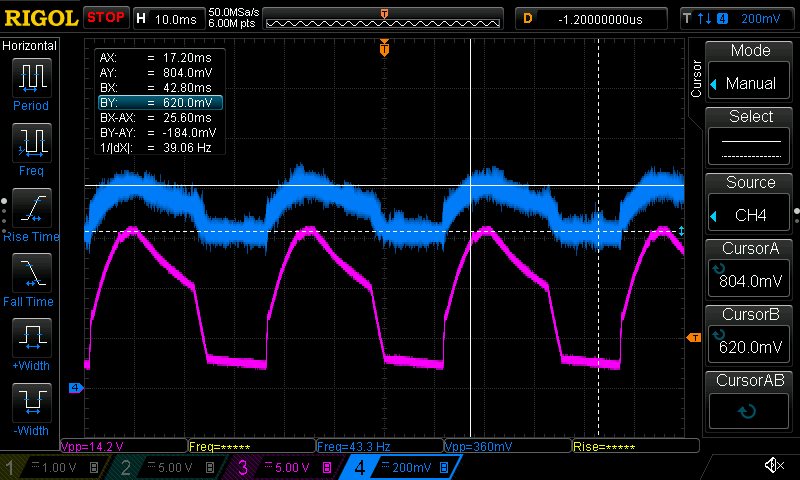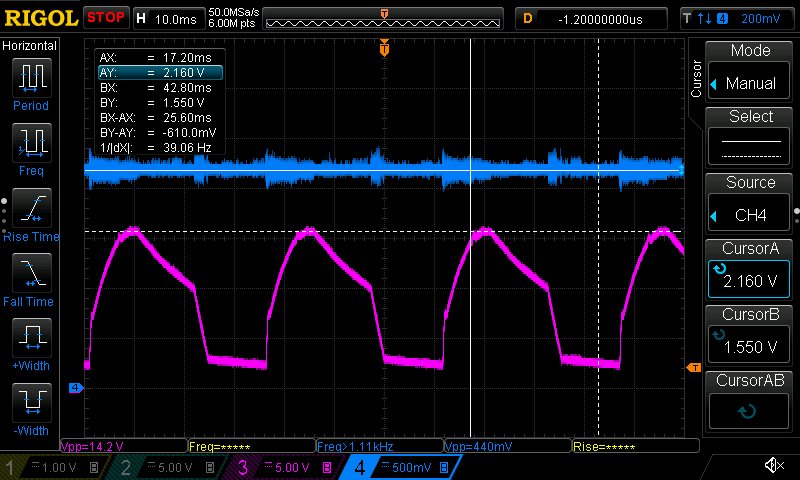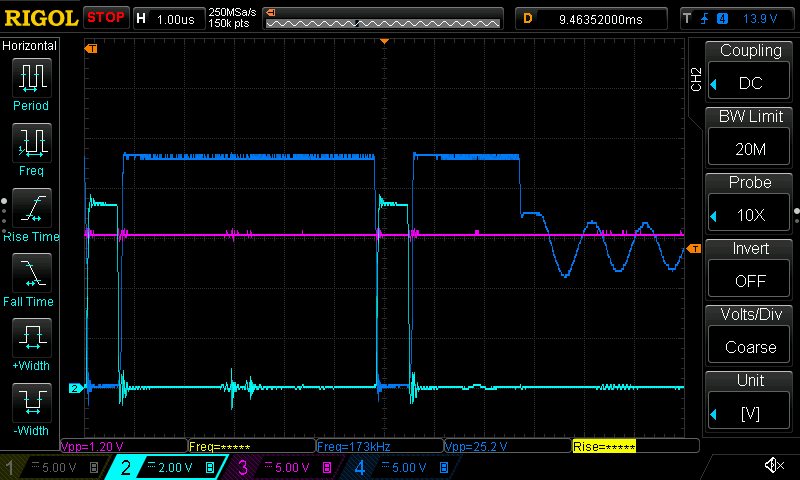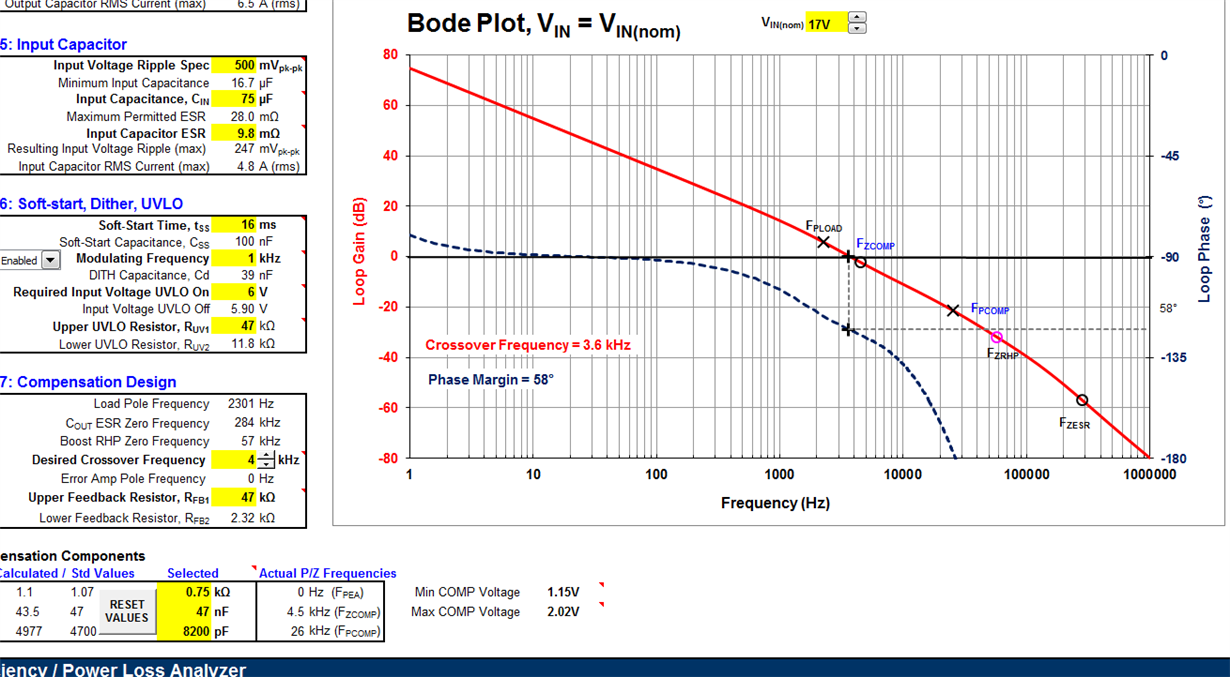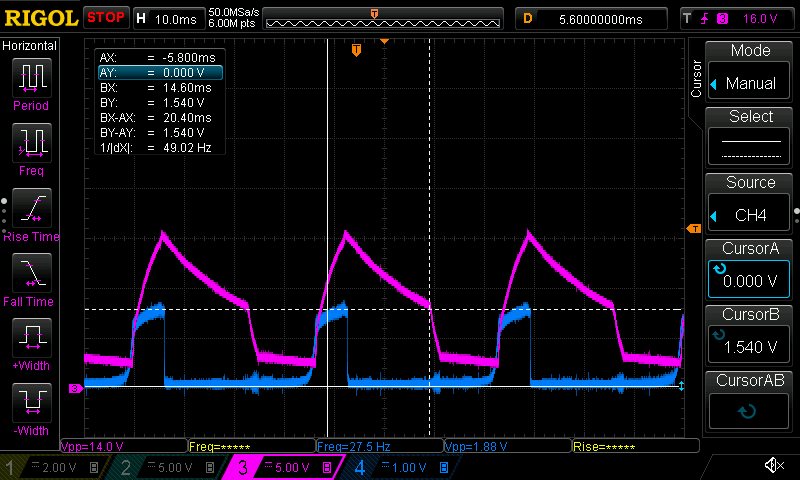Hi.
When I tested new PCB with LM5176 a serious problem was discovered in the operation when Vout in range about Vin...(Vin+2V).
I chose this device precisely because of the declared ability to work when the input voltage close to output volatge. I expected that in this mode there will be an increase in ripple, but not a complete failure of the device.
The device continuously shuts down due to activation hiccup mode.
I checked that there are not overvoltage on Feedback and voltage drops on Enable pins.
Chart1. Blue - FB , Pink - Output
Chart2. Blue - Enable pin, Pink - Output
Then I checked stabilization on inductivity and transistors gates.
Chart3. Pink - Output voltage; Dark blue - Inductivity from VT 5/6/7/8 (Buck transistors); Light blue - Inductivity from VT9/10/11/12 (Boost transistor)
Chart4. Chart 3 in zoom
Chart5. Dark Blue - VT5/7 Gates (High side buck transistors); Light blue - VT6/6 Gates (Low side buck transistors)
Chart6. Dark Blue - VT5/7 Gates (High side buck transistors); Light blue - VT9/11 Gates (High side boost transistors); Yellow - VT10/11 Gates (Low side boost transistors)
The are high spikes on the charts due to the long ground wire (I can't put more than one probe with special short ground spring and press buttons on the oscilloscope in the same time)
It is obvious that the device simultaneously tries to work in both busk and boost modes. Maybe it is normal operation for LM5176 but I don't see other reason for hiccup but simmultaneous opening High side buck transistors and Low side boost transistors.
There is only about 100 Ohm resistive load connected to output. Beyond this region device starts works correctly with the absence of any signs of overcurrent hiccups or uneven stabilization in both buck and boost modes.
Following the example from the previous posts, I tried to reduce Сslope form 390pF to 220pF and increase frequency from 250kHz to 350kHz but nothing changes (except for switching frequency).
I would be very grateful if someone could help me find the right way to solve this problem.
There are parts of schematic and PCB in it's current state. I took care that all analog grounds connected at Pin 10 IC and no direct power currents flowed throw it. There is PCB with 6 layers and same stack as eval board.


